Ebrahim Yazdi could not believe his ears. After a lifelong commitment to activism and revolutionary ideals, he was accused of being an American lackey. It was 1990 and the accuser was his perennial foe, Ahmad Khomeini, the powerful son of the founder of the Islamic Republic, Ayatollah Ruhollah Khomeini, who had passed away the year before. Ahmad had now unearthed a letter from the Ayatollah that condemned the Freedom Movement of Iran (FMI), the political party which counted Yazdi as a leading figure: “These pretenders to Islam will mislead our youth ... they are more harmful than all other [opposition] grouplets.” Yazdi doubted the authenticity of the letter and angrily replied to Ahmad:
“You know better than anyone that it was me who drafted Mr. Khomeini’s Political and Executive Blueprint which led to the foundation of the Revolutionary Council and the Interim Government. You are accusing someone who was a founder of the Islamic Revolutionary Guards Corps (IRGC), who invented the Quds Day [an Iranian-sponsored day of solidarity with Palestine], who was the original designer of many revolutionary bodies.”
Despite all the anger, Yazdi cannot have been surprised. By 1990, he knew well that the regime he had helped found had no place for him. Yazdi had been one of the regime’s high-ranking officials in its early days — but now was not even allowed to run for parliament. When the Freedom Movement leaders wrote a mild letter to protest, they were thrown in jail and tortured. Later, Yazdi would also found himself in prison.
In the heady days of the mid-1970s, as the powerful imperial government of the shah in Iran was falling into crisis, Yazdi had two lives: one as a pharmacologist in Houston, Texas and the other as a key actor in the worldwide revolutionary network working to overthrow the shah. The spiritual leader of the movement, Ayatollah Khomeini, was based in Najaf, a holy Shia city in Iraq, and Yazdi paid him regular visits during his annual trips to the Middle East. He came to be a trusted aide of the aged Ayatollah; and when, in 1978, Kuwait refused to take in Khomeini, who was being kicked out of Baathist Iraq, it was Yazdi who suggested a new, unlikely headquarters for the revolution: Paris, France.
Khomeini accepted the doctor’s advice. He and Yazdi and other revolutionary figures moved to a leafy suburb of Paris. The Ayatollah sat under an apple tree as Yazdi, together with two other ambitious, Western-educated aides — Abolhassan Banisadr and Sadeq Qotbzadeh — planned the future. Most of what Khomeini said in those days was drafted by the triumvirate and when the Shah fled and Khomeini went back to Iran to found a new revolutionary regime, they were richly rewarded. Banisadr became the first president in the history of Iran, Qotbzadeh headed the national broadcaster and Yazdi became the deputy prime minister — later the foreign minister — in a government headed by a fellow FMI leader, Mehdi Bazargan.
Yazdi and his ilk probably thought of themselves as Nehrus to Khomeini’s Gandhi. They expected the Ayatollah to sit in a seminary in the holy city of Qom while they ran the affairs of state from Tehran. But the septuagenarian cleric had different ideas — and he outmaneuvered his comrades. Qotbzadeh was executed and Banisdar, impeached by parliament, had to flee Iran disguised as a woman. Yazdi remained, hopeful for better days, but never again would he find access to the halls of power.
Yazdi’s fall started in November 1979, a mere nine months after the revolution. When revolutionary students took over the US embassy, the Bazargan government resigned and so did Foreign Minister Yazdi. Khomeini had endorsed the hostage-taking of US diplomats. But Yazdi could not condone the act. And he must have seen the writing on the wall. In 1980, he was elected as member of parliament for a Tehran district, in the first post-revolutionary parliament; but his candidacy was rejected in later elections.
Yazdi had done much to build the Islamic Republic during his short time in power. Right after the revolution, in the spring of 1979, he met the US Secretary of State Cyrus Vance at the United Nations headquarters in New York. As Gary Sick, who was present at the meeting, told IranWire, Yazdi started the meeting with reminding Vance that not long ago, he was among the throng of protesters outside the UN gates. Now he was lobbying the Americans to accept the new Islamist regime.
In September that same year, Yazdi went to Havana to attend the storied summit of the Non-Aligned Movement. He hob-nobbed with host Fidel Castro, a hero of revolutionaries the world over, who was jubilant that a steadfast US ally was now joining the other side. In the same summit, Yazdi met Saddam Hussein, who had become president of Iraq just a few months before.
“I am a doctor ... I am not political and don’t know much about diplomacy,” Yazdi told President Saddam. “I have come to speak straight and hear straight [your] words.” He reassured the president that “the Iranian revolution doesn’t want to export itself to Iraq.” Saddam, calmly smoking a cigar, reassured Yazdi that Baathists believed in Islam: “We are Muslims, but we believe than when religion interferes in government, or vice versa, the people get hurt.”
Saddam’s words proved prescient; Yazdi’s reassurances less so. A bloody war broke out between the two neighbors when Iraq invaded Iran in 1980. And when Iran retook its territory, by 1983, Yazdi’s FMI asked Iran to not take the war to Iraqi territory. Yazdi’s party was repressed over this very issue as Khomeini had decided to export the revolution after all. “We’ll take Karbala first, and then Jerusalem,” the Ayatollah boasted.
But Yazdi could never have accepted a politics without religion.
Born in 1931 in Qazvin, Yazdi came from a wealthy and religious family. His merchant father, who sold henna to the markets in Soviet Russia and Caucasian republics, financed the local clerics. Yazdi came of age during twelve turbulent years when Iran was relatively free and democratic (1941-1953). He supported the nationalist Prime Minister Mohammad Mossadegh and joined his National Front, but was among those who wanted an organization that was both religious and nationalist. In 1946, he joined the Movement of God-Worshipping Socialists and attended its meetings in the house of its founder, Mohammad Nakhashb. Years later, he still remembered “Nakhashb’s powerful eyes,” as the political science graduate spoke of the need for Muslims to unite and fight injustice.
Yazdi was convinced and spent his life in organizations that were both Islamist and modernist. In 1960, he emigrated to the United States and went on to become a medical doctor. He got his green card, became a US citizen and was to live there with his wife and six children. Years later, Houston Muslims would remember him as the student activist who liaised widely with the locals.
But his connections went far beyond. In 1963, he traveled to Egypt to ask for funds from the government of President Gamal Abdel Nasser, and founded a militia that could bring down the Shah’s government. Its headquarters were later moved to Beirut; and once a year, the kind, spectacled doctor of the Houston suburbs, would head to the barracks in Lebanon to see how the militia he had helped start was shaping up.
In September 1979 in Havana, as he was palling around with fellow Third World leaders, he must have rediscovered some contacts from his Beirut days. Setting up camps in Lebanon was, after all, a rite of passage for revolutionaries from around the world, many of whom came to build post-colonial states later on. Yazdi, too, must have felt that he was at the beginning of a long state-building career. But it was not to be.
And yet — he never left politics or Iran. In 1995, after Bazargan passed away, he inherited the FMI leadership. Later, the regime would pressure him to resign, and he did; but the FMI never accepted his resignation. When the reformist President Mohammad Khatami was elected in May 1997 and Iran liberalized a notch, Yazdi found something of a new lease on life. In December that same year, when Iran hosted many heads of states for the summit of the Organization of the Islamic Conference, the regime was embarrassed when many dignitaries asked to meet the isolated Yazdi who had recently been in prison.
The FMI even ran its own candidates in the 1999 parliamentary elections — for the first time in years. The reformists, in hot debates over Islam and democracy, often looked up to the old man as an inspiration, even after the movement was defeated. As the international editor of Kargozaran newspaper in the mid-2000s, your correspondent remembers how passionately some of his colleagues spoke of Yazdi and the FMI.
When Khatami’s presidency came to a disappointing end in 2005, Yazdi even registered to run as president, knowing full well that he would be never allowed to stand. But things got worse with the election of hardliner President Mahmoud Ahmadinejad. After the 2009 elections were rigged, Yazdi was among the hundreds who spent time in jail. After Ahmadinejad’s disastrous eight years, Yazdi was happy to endorse the pragmatic Hassan Rouhani twice and supported his approach to the nuclear talks with the US, even if little changed with regards to domestic repression. He wrote to President Rouhani to complain: “Some of the Intelligence Ministry agents know no limit in cracking down on the members of the FMI ... They openly say that with the election of the new president, the ministry hasn’t changed its attitude to the FMI, and [they] claim to be directed by the Supreme Leader [Ayatollah Khomeini] to crackdown on the FMI and its members.” "
His last years were mired with the debilitations of old age and prostate cancer. When he applied for a US visa last year, so that he could travel to America for surgery, the former US citizen was denied a visa. Many American diplomats who had worked with him were disappointed at the decision. He remained in Turkey, where his daughter lived, and underwent the surgery in Izmir, where he finally passed away on Sunday, August 27.
Yazdi is survived by his wife and a decades-long political partner, Soroor Taliye, four daughters and two sons. His hefty memoirs, entitled “Sixty Years of Patience” came out in Persian in 2012.
visit the accountability section
In this section of Iran Wire, you can contact the officials and launch your campaign for various problems





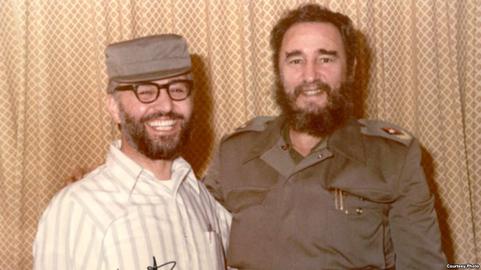
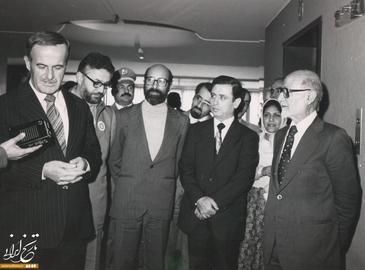
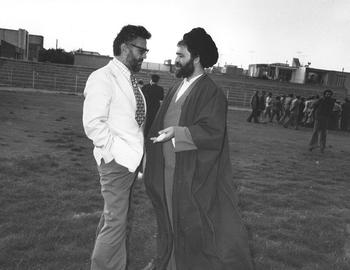
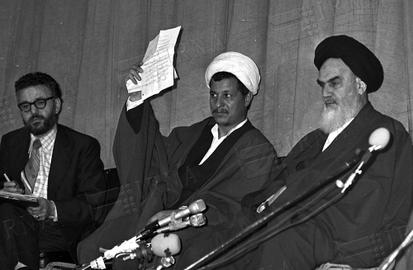



















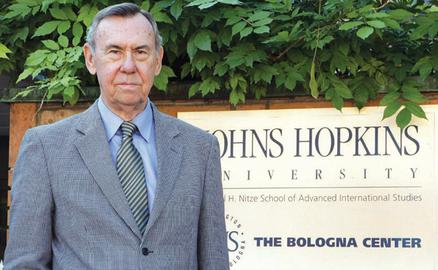
comments